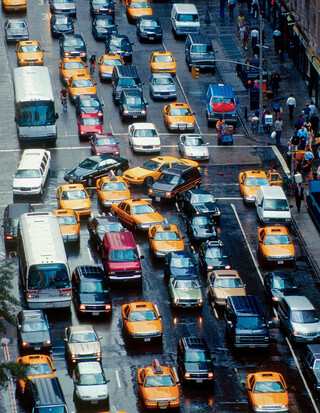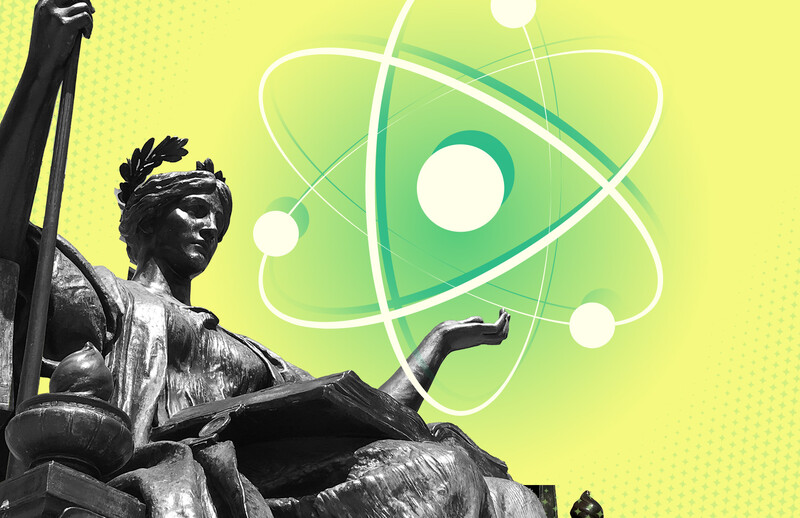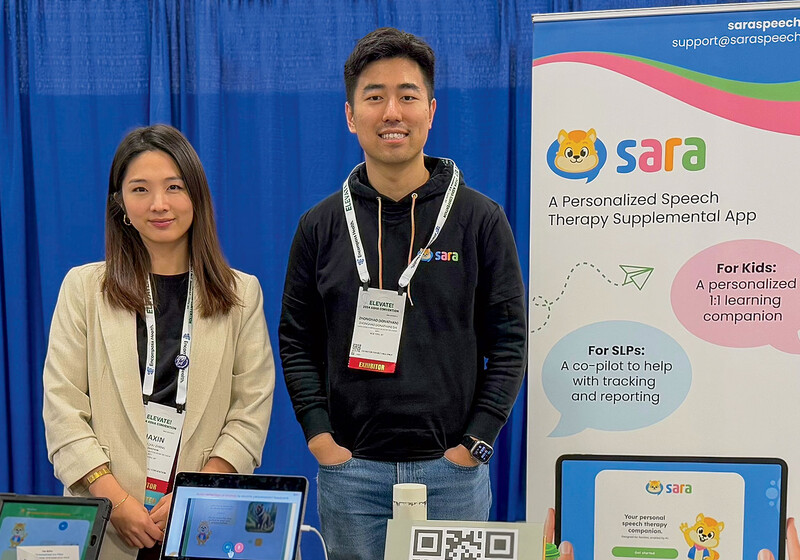On January 5, 2025, following years of delays and political jockeying, congestion pricing made its debut in New York — a first for a US city. Cars entering Manhattan at 60th Street and below at peak hours are now charged a nine-dollar toll in an effort to alleviate gridlock and raise money for upgrades to mass transit. In February, after six weeks of the experiment, transit officials reported improvements: less traffic, more pedestrians, more commerce, safer streets, and shorter travel times. The city collected nearly $49 million, on target to meet the year-end goal of $500 million.
It’s good news for midtown and downtown, but the underlying idea — using pricing levers to reduce congestion and raise revenue for mass transit — came from uptown. Specifically, it flowed from Morningside Heights, where for sixty years Columbia economist William Vickrey ’47GSAS hatched theories of taxation and economic behavior, culminating in 1996 with his winning a Nobel Prize, just days before his death at age eighty-two.
On a recent morning, economist Dan O’Flaherty, one of Vickrey’s former colleagues, takes a moment in his office in the International Affairs Building to remember “the father of congestion pricing.” According to O’Flaherty, Vickrey was thinking about the problems of mass transit in the 1950s while commuting to Columbia from Hastings-on-Hudson. “He would take the Metro-North to East 125th Street,” Flaherty says, “and then roller-skate across town to campus.” Here was a man who cared about travel time and didn’t like being sardined in trains or buses. Vickrey dissected the problem in his 1952 book The Revision of the Rapid Transit Fare Structure of the City of New York.
“Vickrey realized that the major burden on the system was the congestion,” O’Flaherty says. “If I’m on an empty subway car at 2 a.m., I can read, I’m comfortable, and it doesn’t take long for people to get on and off. But if I take the train from 116th Street to Penn Station during rush hour, I’ve got an elbow in my belly and a briefcase on my nose, and every stop takes a long time.” Vickrey created a model that considered the discomfort that each individual passenger contributes to a packed subway car and proposed a pricing scale that charged straphangers more for traveling at peak hours in busy areas and less for traveling off-peak or in less crowded zones. “If you’re going from Van Cortlandt Park to 181st Street, you’re not getting in anybody’s way,” says O’Flaherty. “But if you’re going to Times Square, you are.”
In the early 1970s, Vickrey extended this idea to automobiles, designing a computer-based system to monitor traffic as it entered particularly congested areas. Again, the tolls would vary according to the hour and the location, and drivers would be billed each month. This is essentially what congestion pricing looks like in Manhattan in 2025.
But not everyone is along for the ride. Critics allege that congestion pricing hurts working people, and that toll revenue must be used for highways, not mass transit — claims that SIPA professor Steve Cohen, who is director of the Earth Institute’s Research Program on Sustainability Policy and Management, calls unfounded. Cohen says most working people from New Jersey and the boroughs take mass transit, while those who drive into the city — and spend money to park — tend to be well-off.
As for the argument that using roadway tolls for the subway is improper, Cohen notes that Port Authority tolls, for instance, subsidize the airports, and Triborough Bridge and Tunnel Authority tolls subsidize mass transit. “If this toll is illegal,” says Cohen, “then all the tolls are illegal.”
For Vickrey, tolls were about fairness, and he never stopped thinking about taxation and transit and the social good. He was a Quaker and conscientious objector in World War II — “the most moral person I’ve ever known,” says O’Flaherty. And though Vickrey didn’t live to see his pricing ideas implemented in New York (or in London or Stockholm), O’Flaherty reports that he did see them realized in Singapore.
“Vickrey was far ahead of his time,” says O’Flaherty, “and his work is as vital as ever.”




